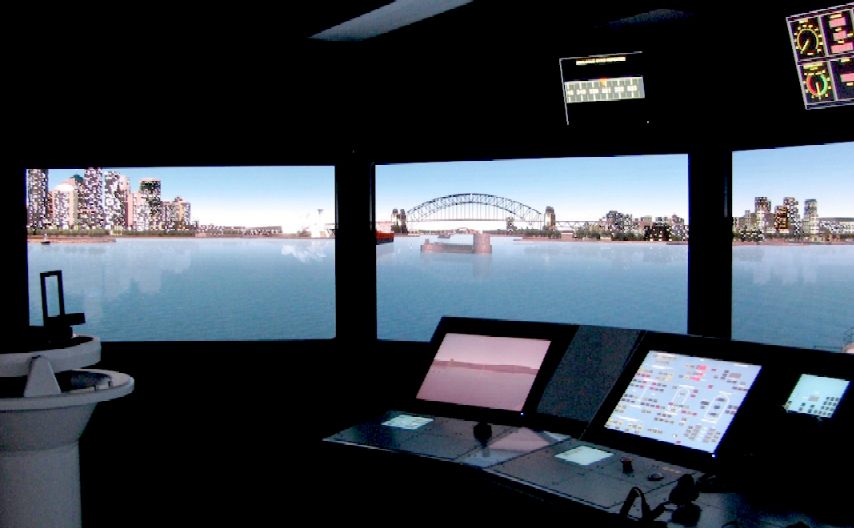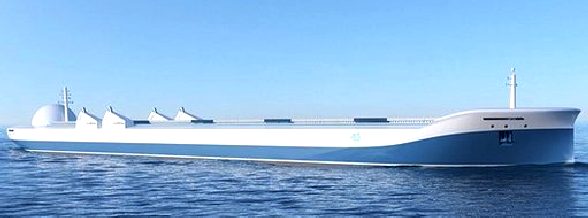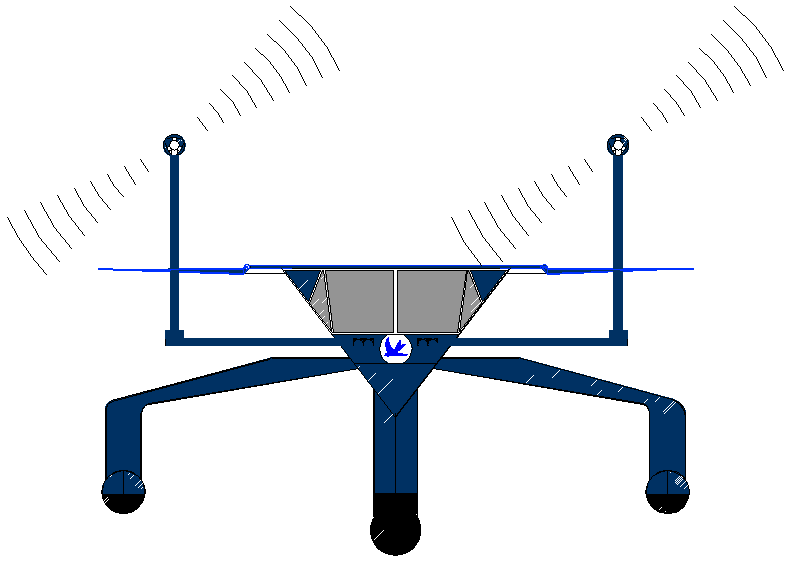|

UAVs
have been approved by the FAA for civilian operations, crop dusting,
border controls and film making. GOOGLE - Are streets ahead with
autonomous cars that have a 100% safety track record at time of
publication. So why is shipping different?
ROLLS ROYCE PREDICTS FLEET OF DRONE SHIPS IN 10 YEARS
(2014 >>>>>>>>>
2024)
Rolls-Royce may not have a fleet of autonomous luxury cars on the road yet, but the ship-building engineering group that bears the same name is predicting self-piloting drone ships within the next ten years. Over-cautious regulations and nautical miles of red tape are the key factors holding adoption back, Rolls-Royce marine innovation engineering chief Oskar Levander told the FT
[subscription required], concluding that the remaining technological challenges around creating autonomous cargo ships are dwarfed by the problem of getting rule-makers around the globe to agree on new standards for such vessels. However, Levander also predicts that autonomous ships could begin operations sooner, albeit on a smaller scale.
The Rolls-Royce engineer warns that it will likely take more than a decade for regulators around the world to agree on a new set of rules governing drone ships across all oceans. However, if forward-thinking countries choose to move faster and change the rules around their own territories - such as US coastal waters - that could see local routes navigated by self-piloting craft much sooner.
Without that regulatory evolution, the company says, it has little motivation to actively work on the autonomous technology, however.
Rolls-Royce's reticence doesn't mean other projects aren't exploring the field. The European Commission is co-funding MUNIN (Maritime Unmanned Navigation through Intelligence in Networks), a scheme to develop and verify concept cargo ships that could be remotely navigated by land-based pilots, as well as look at the legal and regulatory issues around them.
The benefits, the MUNIN project team has calculated, could be significant. Reducing cargo ship speed by 30-percent could cut overall
fuel consumption in half, despite the longer journey; the downside on a traditional ship would be an extended period onboard for the human crew, something a remotely-controlled vessel would avoid. A physical presence onboard would only be required for approach and berthing, while an emergency team could be flown out to handle issues the ships' autonomous problem-solving routines could not handle.
Rolls-Royce says that with popular attention being paid to self-driving cars, like
Google's fleet, and
drones, such as Amazon's PrimeAir scheme, the time is right to discuss autonomous ocean-going vehicles too.
That's not to say the regulatory environment facing drones in either land or air is any more settled, however. The FAA is still uncertain on how legal quadcopters and other drones are, something which could well put a damper on Amazon CEO Jeff Bezos' plans to use them for last-minute deliveries, for instance.
On the road, meanwhile, while analysts predict billions in cost reductions and a huge increase in safety, rules around fully-autonomous cars are still yet to permit computers alone to take the wheel. Google's cars, for instance, are required to carry not only a safety driver to be behind the wheel, but to have a second person onboard just in case.
UNMANNED
SHIPS, FEBRUARY 2014
Rolls-Royce has been working on hardware and software systems designed to turn the giant cargo ships that are responsible for 90 percent of intercontinental world trade into semi or fully autonomous robots. The company says that these drone ships would be safer and more efficient than manned ships, but the shipping industry isn't buying it.
Rolls-Royce’s Blue Ocean development team, which is leading the project, says that taking humans off of ships (and removing all of the human-related infrastructure, like crew quarters, heating and air conditioning, water purification and storage, etc.) would lead to ships that weigh 5 percent less and would use up to 15 percent less fuel. Additionally, the average cargo ship costs between US $3,000 and $4,000 per day in crew operating expenses alone.
To keep humans in the loop somewhere, Rolls-Royce is also creating on a prototype virtual reality display system that gives a captain (or whatever you call someone in charge of a ship when they're not actually on said ship) 360-degree views from a virtual bridge. The captain can hop from virtual bridge to virtual bridge, theoretically overseeing many different ships all at once through remote supervised autonomy.
While unmanned cargo ships are currently illegal, Rolls-Royce is optimistic that "the
technology is at the level where we can make this happen, and society is moving in this direction."
Unfortunately, making this happen is not going to be easy. It's not because the technology isn't there, but rather because humans have been in control of ships for so long that there's a lot of resistance to changing that, mostly surrounding what seems to be an implicit belief that it's just not something that's realistically possible to execute safely.
Unmanned ships should be considered in the same terms as we consider unmanned cars and other unmanned systems. This is a big "should," because it's not the way it works in practice, but still: what we should be asking is not how safe we can make an unmanned ship, but whether we can make an unmanned ship as safe or safer than a manned one. If we can cross that threshold, then we should be willing to go the unmanned route, especially if there are significant additional benefits. And considering that (as with just about everything) human error causes most maritime accidents, there's potential to make sea travel much safer than it is today.
Humans, strictly speaking, are absolutely awful at things like driving cars and steering ships for long periods of time, because it's boring, we're lazy, and sooner or later we get tired and stop paying attention. We just have to get over the knee-jerk reaction that humans can do a better job at it than an
autonomous system. As one maritime standards association member put it, "Can you imagine what it would be like with an unmanned vessel with cargo on board trading on the open seas? You get in enough trouble with crew on board."
Er, yeah, that's kind of the point, isn't it? Humans cause trouble. Computers don't. Or at least, when they cause trouble, they do so in ways that are often predictable, and if they do manage to screw up, other
computers can stop them before anything really bad happens. If all else fails, and something really bad does happen, you can go back and figure out exactly why it happened and prevent it from happening again. That's one of the advantages of technology, but not everyone agrees:
“It cannot and will never replace the eyes, ears, and thought processes of professional seafarers,” Dave Heindel, chairman of the ITF’s seafarers’ section in
London, said in [a statement emailed to
Bloomberg]. “The human element is one of the first lines of defense in the event of machinery failure and the kind of unexpected and sudden changes of conditions in which the world’s seas specialize. The dangers posed to the environment by
unmanned vessels are too easily imagined.”
Now, I'm not a sailor, and people who know more about this sort of thing than I do should feel free to correct me on this, but I have to imagine that the world's seas offer conditions that are no more complex, and potentially far less complex, than the conditions that you'd find driving around downtown San Francisco during rush hour. Furthermore, we already know that sensors (like
radar) are better than humans at detecting other ships and obstacles in the water, especially in the dark or in bad weather.
There's an obvious path forward from here: do what Google did with its autonomous car program. Make the ships autonomous, but keep a human behind the wheel until we've built up some confidence in the technology. Perhaps we gradually decrease the dependence on crew, and increase opportunities for teleoperation. And maybe it'll never make sense to completely remove
humans from ship operations, but significantly reducing the crew to improve both safety and efficiency at the same time certainly sounds like a good idea to me.
ACADEMIA
Currently the debate is more academic than operational, said Peter Sand, an analyst at the Bagsvaerd, Denmark-based Baltic and International Maritime Council, whose members control about 65 percent of the global fleet. None of them have raised the question of drone ships with the trade group, he said.
Levander of Rolls Royce is accustomed to chilly receptions. When he broached the subject at an industry conference in London last May, the audience audibly scoffed, and other speakers on Levander’s panel dismissed the idea.
“If everybody in the industry would say, ‘Yes, this is the way to go,’ then we are too late,” Levander said. “I expect ship owners to be conservative, but it will change.”
The Bloomberg reporter and editor on this story are: Isaac Arnsdorf in New York
iarnsdorf@bloomberg.net and Millie Munshi at
mmunshi@bloomberg.net

CONTACTS
Bristol (Marine gas turbine support)
Tel +44 117 974 8500
Fax +44 117 979 2607
Dartford (Marine Equipment Sales and Service)
Tel: +44 1322 312028
Fax: +44 1322 312054
Portsmouth (Marine Electrical Systems)
Tel: +44 23 9231 0000
Fax: +44 23 9231 0001
Bristol (Naval)
Tel: +44 117 974 8500
Fax: +44 117 979 2607
Derby (Submarines)
Tel: +44 1332 661 461
Fax: +44 1332 622 935
Dunfermline (Motion control and UK service
centre)
Tel: +44 1383 82 31 88
Tel: +44 7831 167138 (24hr emergency)
Fax: +44 1383 82 40 38
Newcastle
(Michell Bearings)
Tel: +44 191 273 0291
Fax: +44 191 272 2787
Newcastle (Replenishment-at-sea systems)
Tel: +44 191 256 2800
Fax: +44 191 256 2801
Email: marineinfo@rolls-royce.com

LINKS
Rolls-Royce
predicts drone ships in a decade
http://www.slashgear.com/rolls-royce-predicts-drone-ships-in-a-decade-27310153/
BBC
technology news
http://www.bbc.co.uk/news/technology-26438661
Planning-for-a-future-of-robot-ships
http://www.safety4sea.com/planning-for-a-future-of-robot-ships-19611
Driverless-cars-meet-captainless-ships-autonomous-vehicles-to-take-to-the-sea/
http://www.bbc.co.uk/news/technology-26438661
http://singularityhub.com/2014/03/18/driverless-cars-meet-captainless-ships-autonomous-vehicles-to-take-to-the-sea/
Autonomous-cargo-vessels-could-set-sail-without-crew-under-watchful-eye
Unmanned
autonomous ships
http://www.unmanned-ship.org/munin/about/the-autonomus-ship/
Unmanned-cargo-ships-face-industry-resistance-are-a-good-idea-anyway
Rolls
Royce Waterspeed
http://www.rolls-royce.com/marine/ship_design_systems/

An
example of an ocean going drone vessel, that may be used in much the
same manner as aerial drones, for persistent surveillance, but also as
important countermeasures to UAVs or other remotely piloted vehicles, in
taking them down in times of hostility, or where invading sovereign territory.
See GB2511731, published on the 17th September 2014.
|


